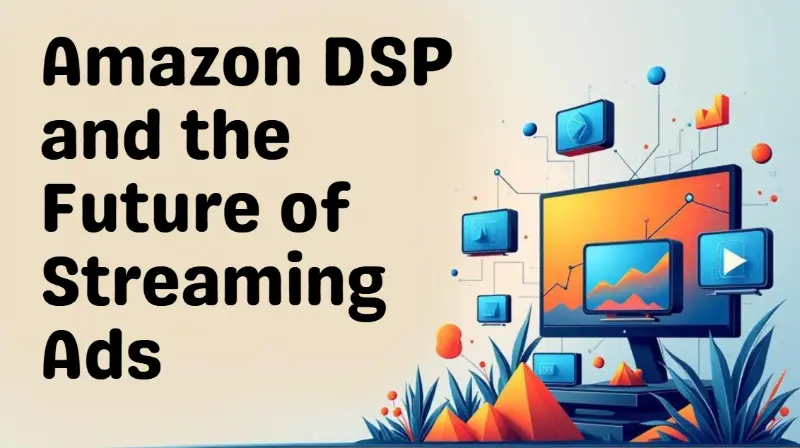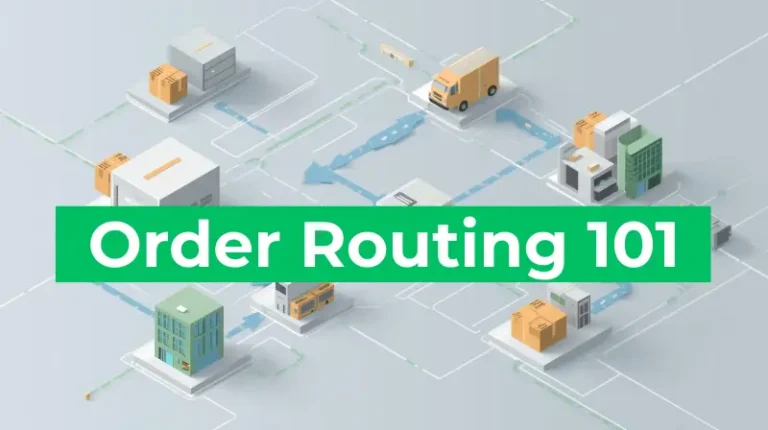Amazon Demand-Side Platform (DSP): The Future of Streaming TV and Digital Ads

Last updated on August 21, 2025

I didn’t expect to wake up one day and think, “Wow, Amazon’s DSP is about to rewrite the ad playbook.” But here we are. As part of the broader Amazon Advertising ecosystem, Amazon’s Demand-Side Platform (DSP) is pulling ahead in a big way. Amazon’s Demand-Side Platform offers advanced, data-driven capabilities for targeted advertising, accessible to all advertisers. Amazon DSP stands out in the digital advertising landscape for its integration with Amazon’s data and its unique ability to reach audiences both on and off Amazon platforms.
Snapshot For Busy Brands
Amazon DSP ads aren’t just another channel; they’re a full-stack programmatic hub that lets you buy ad inventory across multiple platforms, including Amazon-owned properties and beyond. Think Prime Video, Fire TV, Amazon owned sites, Amazon owned websites, third party websites, audio, mobile apps, even CTV via Roku, as well as Amazon devices, all with Amazon’s data-rich targeting under the hood.
Amazon DSP offers a variety of ad formats and ad types, such as display, video, and audio ads, to reach customers at different stages of the journey. The platform provides access to premium ad placements and valuable ad space within a digital marketplace, maximizing your campaign’s reach and effectiveness. And ad spend on this thing is exploding.
Slash Your Fulfillment Costs by Up to 30%
Cut shipping expenses by 30% and boost profit with Cahoot's AI-optimized fulfillment services and modern tech —no overheads and no humans required!
I'm Interested in Saving Time and MoneyWhy Amazon’s DSP Is Surging
Let’s talk numbers: Amazon’s Q2 2025 advertising revenue hit $15.7 billion, a 22 percent year-over-year jump, far outpacing its core retail growth. Ad campaigns run through Amazon DSP have significantly contributed to this increase in ad revenue. Executives specifically credited DSP improvements and a new Roku-connected TV deal as major catalysts, noting measurable gains in campaign performance through enhanced targeting and reporting.
Early signs already show advertisers are doubling down. Prime Video ad buys made via DSP rose from 26 percent in Q3 2024 to 36 percent in Q4, and by late 2024, Amazon DSP accounted for 32 percent of all Amazon ad spend. Setting an appropriate marketing budget is crucial for Amazon DSP campaigns, as a minimum spend is often required to fully leverage its capabilities. For advertisers, new to brand sales have become a key metric when evaluating the impact of Prime Video ad buys through Amazon DSP.
Let me put it bluntly: Amazon is turning DSP into its playbook, for video, audio, programmatic display, streaming TV ads, you name it. Amazon DSP campaigns are now central to this shift. It’s cheaper on fees. It leans on unmatched first-party data. And it’s becoming the default for advertisers who want those data-driven, performance-rich hooks.
How Amazon DSP Works, And Where Your Ads Can Show Up
At its core, Amazon DSP is a tool for buying ad inventory through programmatic real-time bidding (RTB), same as other DSPs. This is a form of programmatic advertising that leverages ad exchanges and ad servers to automate and optimize the process of buying and selling digital ads. But it’s the panoramic advantage that matters:
- You can target based on Amazon’s shopper behaviors, purchase history, browsing intent, and even the detailed aisles they’ve wandered through. Amazon DSP enables advertisers to reach target audiences, relevant audiences, and existing audiences using advanced ad tech for precise segmentation and campaign optimization.
- Your ads appear across Amazon’s ecosystem, Prime Video, product detail pages, Fire TV, mobile browsers, and now across the open web via Amazon Publisher Services and other ad exchanges. This includes Amazon DSP inventory and a variety of ad products such as online video ads, audio ads, and sponsored display ads. Ad placements can be purchased through private marketplace deals and real-time bidding, allowing you to purchase ads and purchase ad inventory efficiently.
- The recent Roku integration means you can now reach over 80 million U.S. households using connected TVs via Roku and Fire TV, falling into Amazon’s DSP matrix. Available inventory also includes video content, audio ads, Amazon Music, IMDb TV, and STV ads, expanding your reach across streaming and audio platforms.
You can measure ad effectiveness using metrics like detail page view rate (DPVR), which shows how well your ads drive users to a product detail page or your own website via web browsers. Sponsored display, sponsored display ads, sponsored brands, and sponsored ads are also available within Amazon’s ecosystem, providing additional options for campaign strategy.
Bonus: Amazon’s Multi-Touch Attribution, just deployed, blends A/B tests with machine learning so you can see exactly which ad touchpoint nudged a shopper. That’s next-level measurement. Amazon Marketing Cloud and Amazon’s store provide advanced analytics, reporting, and shopping data to further inform your campaign decisions.
Whether your goal is to sell products or convert shoppers, Amazon DSP leverages purchase intent to help you reach the right ads at the right time. You can choose between managed service, where Amazon or a partner manages your campaigns, or self service, which allows you to control and optimize campaigns independently.
Looking for a New 3PL? Start with this Free RFP Template
Cut weeks off your selection process. Avoid pitfalls. Get the only 3PL RFP checklist built for ecommerce brands, absolutely free.
Get My Free 3PL RFPGood News, Bad News, For Competitors
This isn’t happening in a vacuum. The Trade Desk (a big independent DSP) just took a historic 38 – 40 percent stock dip. Analysts were scared, this isn’t just earnings jitters, this is Amazon eating into CTV ad budgets, margins, and mindshare. Compared to other demand side platforms in the digital advertising space, The Trade Desk stands out for its independence and broad inventory access, but Amazon DSP’s unique integration and data advantages are shifting the landscape.
MoffettNathanson lowered TTD’s stock rating, explicitly citing Amazon DSP’s rise and the way it locks brands into its system, “the Amazon shadow… front and center.”
But, to be fair, Trade Desk hasn’t folded. Advertisers still lean on TTD for cross-channel reach, outside Amazon’s walled gardens. DSP budgets are often additive, not always siphoned off. And deep reporting and independence still matter, even as these shifts reshape the broader digital advertising ecosystem.
What This Means For Ecommerce And Retail Media Teams
Here’s where I make it practical:
Amazon DSP can transform your overall advertising strategy by enabling advanced targeting, measurement, and optimization across a wide range of ad products and inventory sources.
1. If you’re already advertising on Amazon, add DSP now. It’s where off-search, high-intent Amazon audiences live, and you can leverage a variety of ad products to reach and convert shoppers.
2. Want to run streaming TV ads? Amazon DSP with Roku gets you into lean-back moments, impressions that weren’t accessible a year ago. Choose the right ad types, ad formats, and ad placements to optimize your ad campaigns and reach your audience at every stage of the customer journey.
3. Lean on first-party data. DSP is built to use Amazon’s shopper behavior to laser-target people before they search for your next product. Use this data to deliver the right ads to the right audience, target purchase intent, and ultimately sell products more effectively.
4. Measure smarter. Use the new Multi-Touch Attribution to see what actually influenced the conversion, not just clicks. Track campaign performance closely to optimize results and enhance your advertising strategy.
5. Still value open-web reach? Bucket part of your budget away from DSP to independent DSPs like Trade Desk, but be smart about the split and performance layering.
Why This Matters
Amazon’s stacking ad inventory across its own sites, streaming platforms, and broad third-party placements is redefining where marketers spend digital ad dollars. Amazon is consolidating ad space and ad placements across its digital marketplace, streamlining how advertisers access and manage inventory. This shift is also impacting ad revenue for brands and agencies, as the new buying environment changes how returns are measured and optimized. For ecommerce brands, that means controlled shopping-inspired ad journeys. Agencies? It’s a giant shift in media buying workflows, with ad tech integration and a growing variety of ad products now available to support campaign management and targeting.
Whether DSP ends up dominating or just co-dominating, one thing’s clear: if you don’t fit into Amazon’s programmatic picture, you’re invisible to a growing share of the market.
Scale Faster with the World’s First Peer-to-Peer Fulfillment Network
Tap into a nationwide network of high-performance partner warehouses — expand capacity, cut shipping costs, and reach customers 1–2 days faster.
Explore Fulfillment NetworkFinal Thoughts
I’ve been watching Amazon’s DSP evolve for years, but this moment feels different. With recent gains in inventory access, better measurement tools, and sky-high ad growth, it’s no longer a fringe play; it’s core infrastructure for streaming TV ads, video, audio, and beyond.
Marketers who tap into DSP now, leveraging Amazon’s reach and data, while still balancing open-web strategies, are the ones reshaping how commerce and advertising converge in 2025.
Frequently Asked Questions
How does Amazon DSP differ from traditional Amazon ads?
Amazon DSP buys ad inventory via programmatic RTB (Real-Time Bidding) across Amazon’s ecosystem, and beyond, using audience data tied to real shopper behaviors.
Can I run streaming TV ads through Amazon DSP?
Yes. With partnerships like Roku and Fire TV, DSP now includes CTV placements across major streaming platforms.
What makes Amazon DSP competitive versus other DSPs?
Its access to first-party shopper data, exclusive inventory, competitive pricing, and enhanced attribution (like Multi-Touch Attribution) give it a performance edge.
Is The Trade Desk sinking because of Amazon DSP?
Trade Desk took a significant hit, analysts flagged Amazon DSP as a key threat. But many advertisers still value Trade Desk’s open-web reach and neutrality.
How should I allocate ad budget between Amazon DSP and independent DSPs?
Lean into DSP for Amazon-owned and streaming inventory, while reserving part of your budget for independent DSPs to maintain open-web presence and measurement balance.

Turn Returns Into New Revenue


 8 minutes
8 minutes


